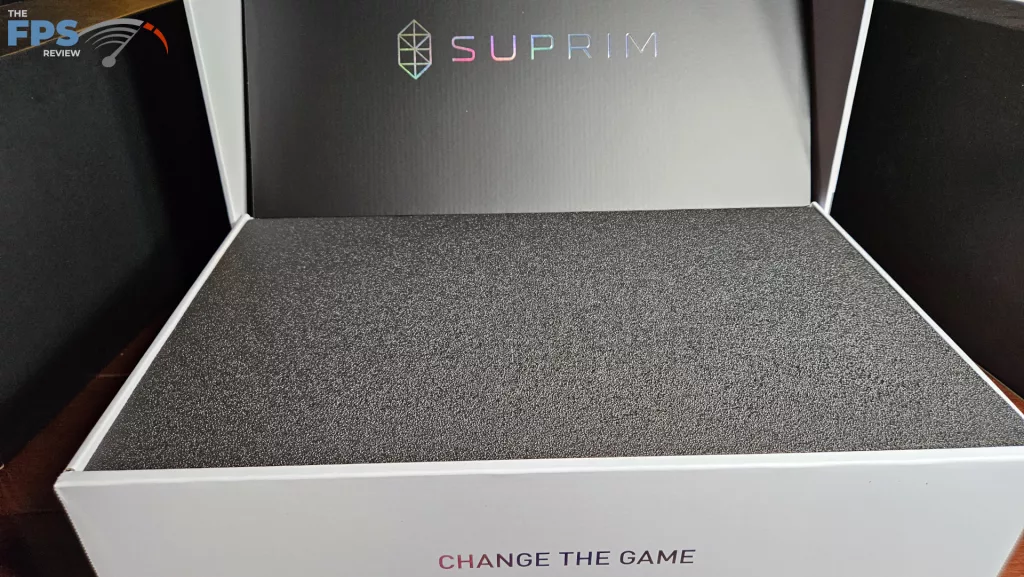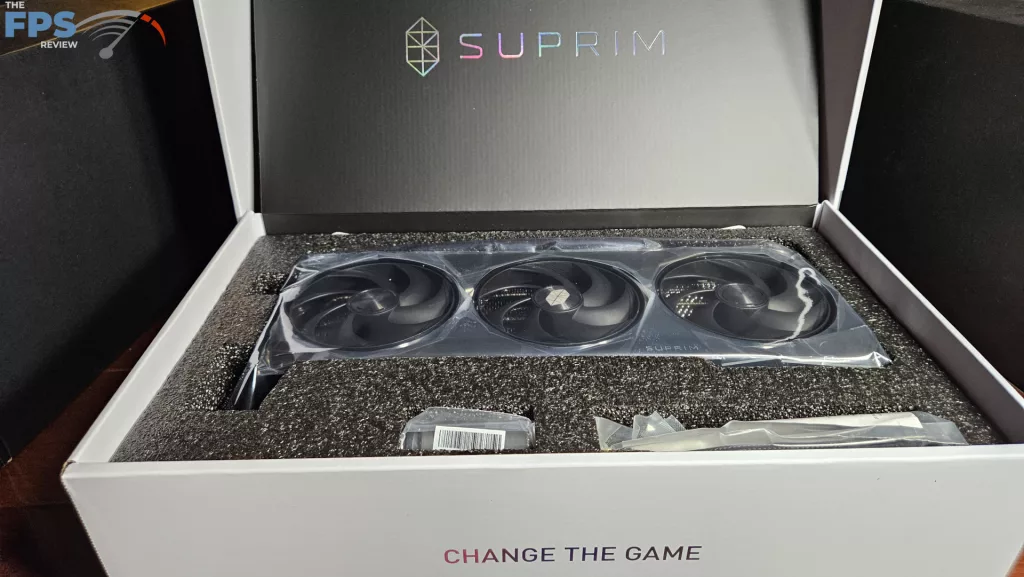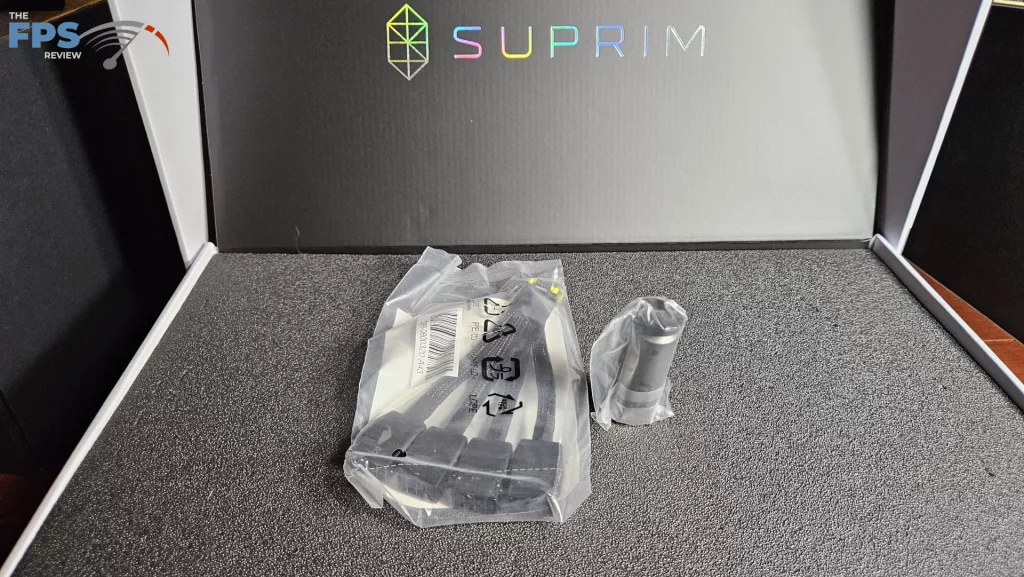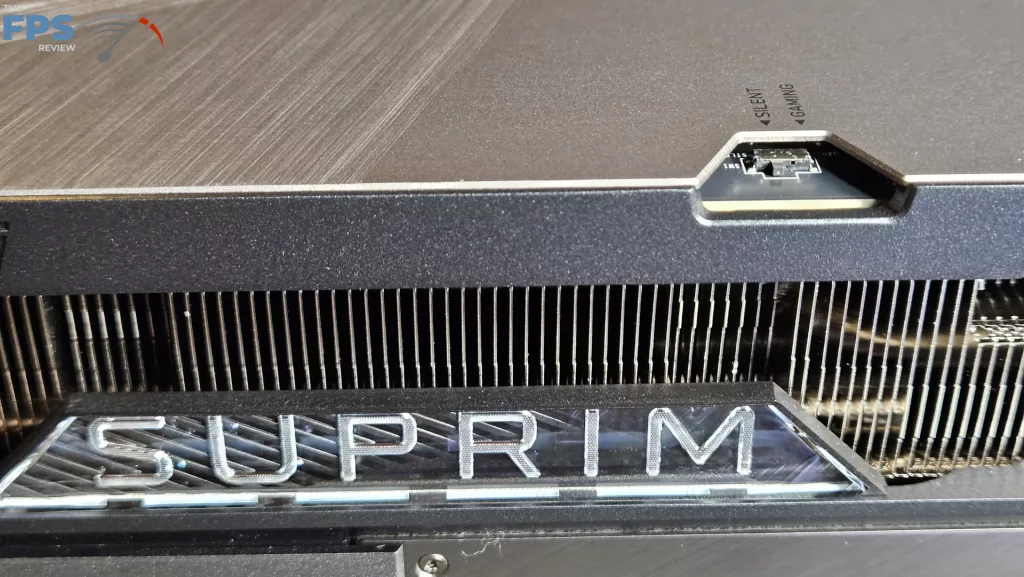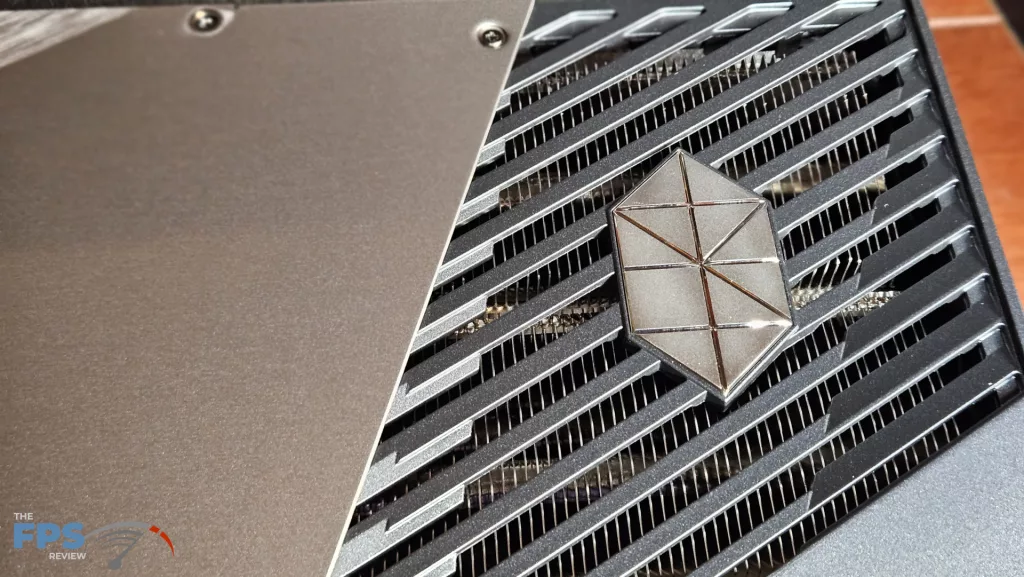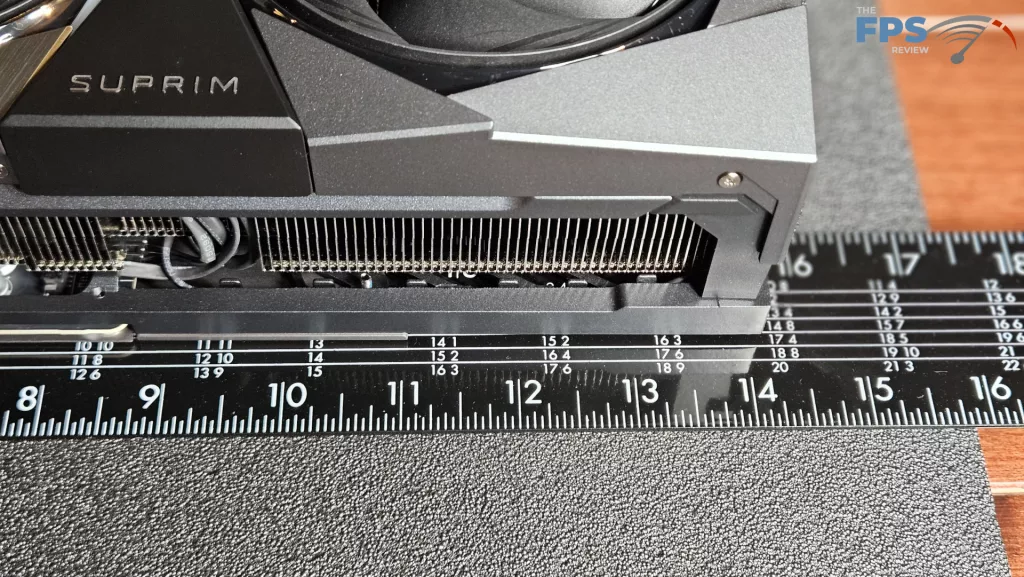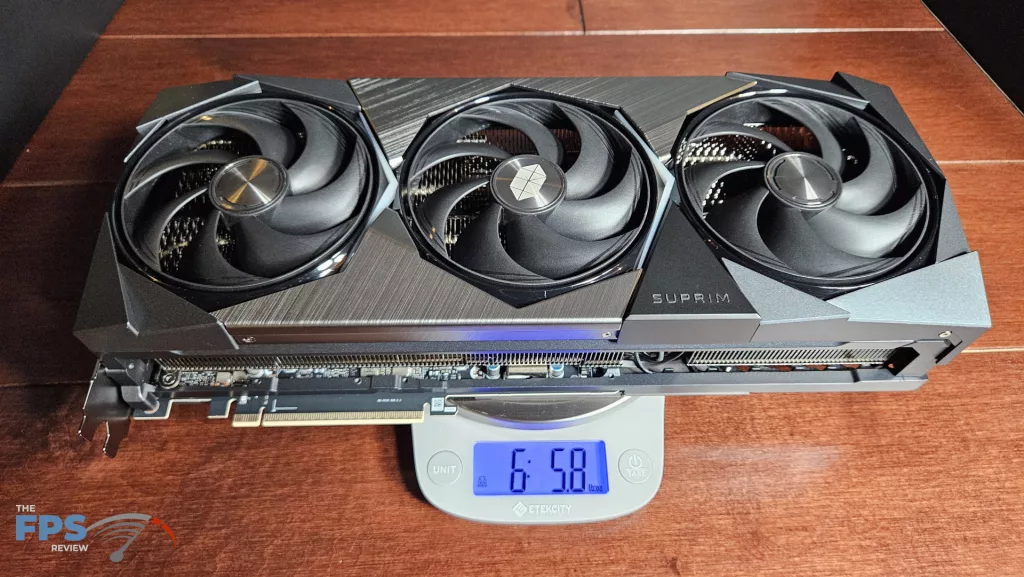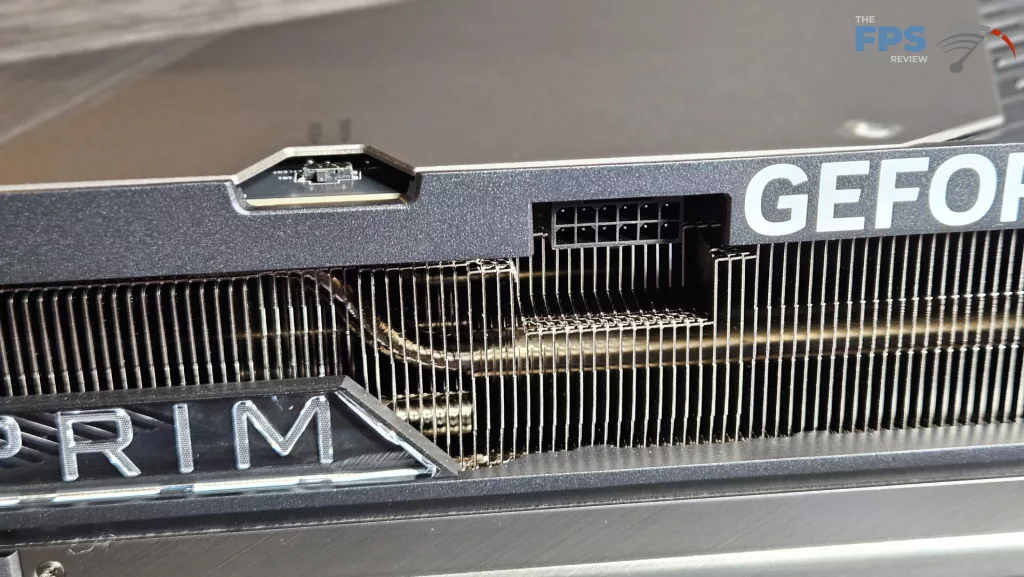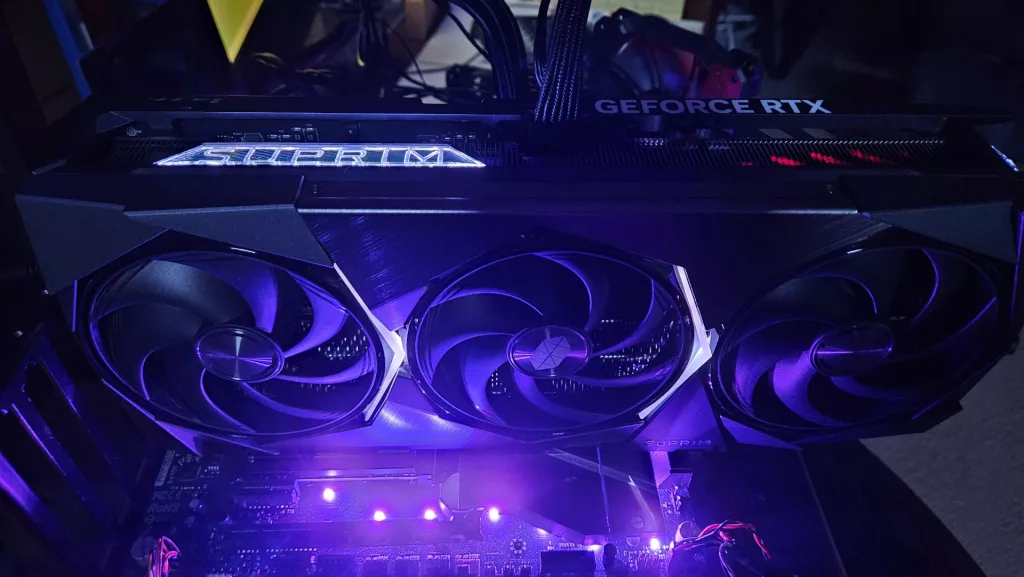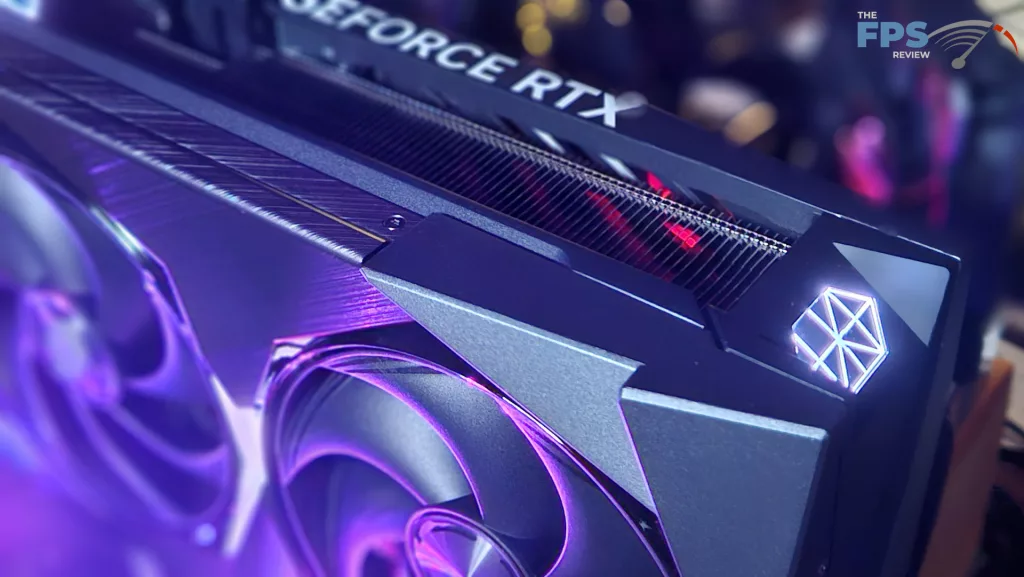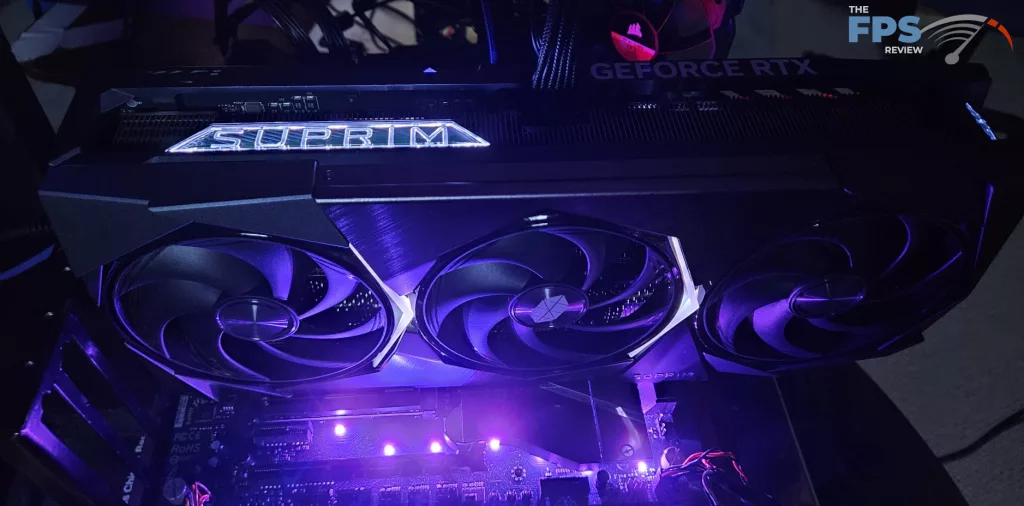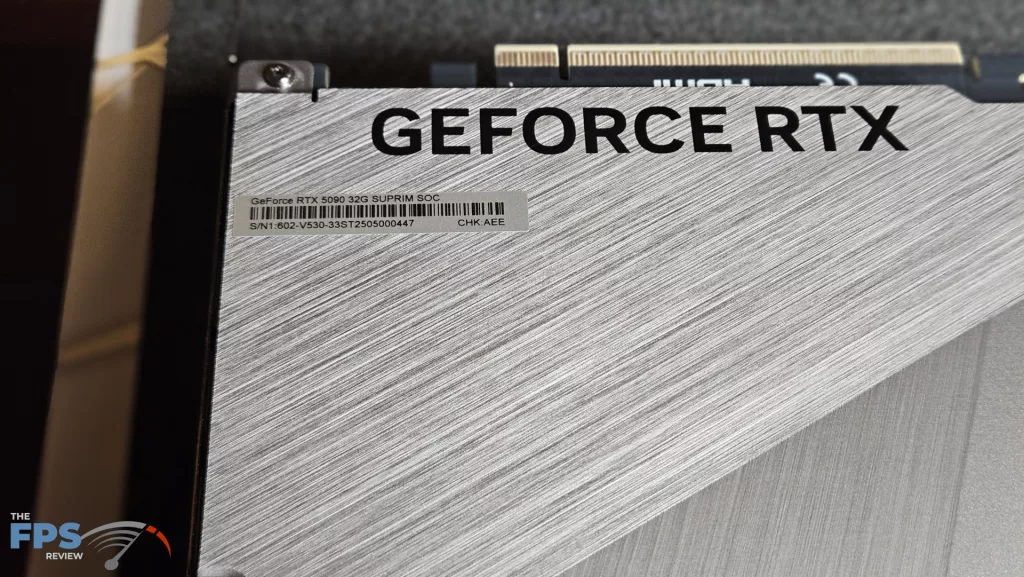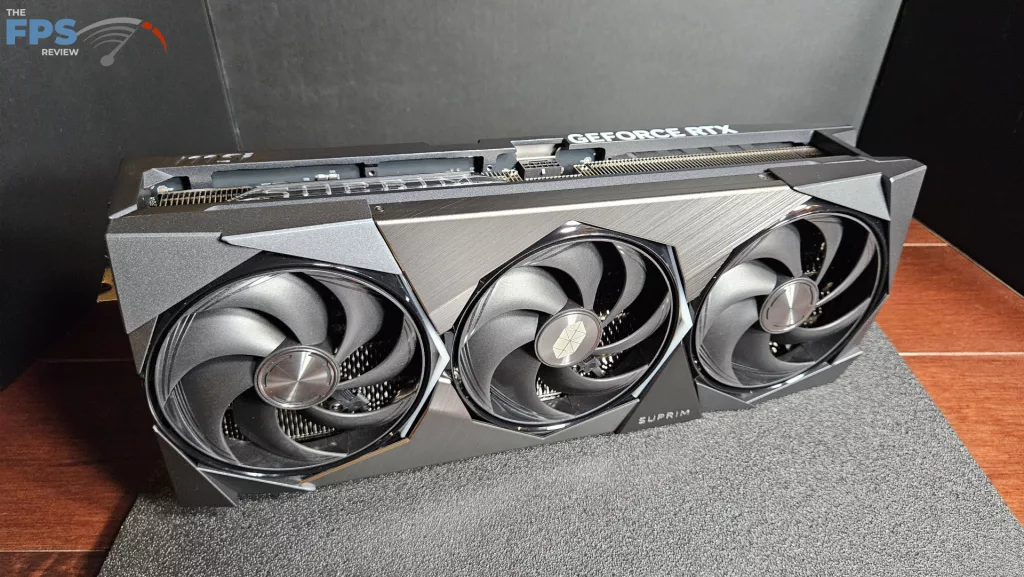
Introduction
This article evaluates the latest flagship video card from MSI, the MSI GeForce RTX 5090 32G SUPRIM SOC (model: G5090-32SPS), which has been purchased online for personal use, and so we are giving it a full review. Since its release in January 2025, the RTX 5090 has been somewhat difficult to find in the standard retail market, and prices have been quite inflated. As of this writing, availability and pricing have seemed to correct somewhat, giving the customer more choice and a little less sticker shock.
MSI has six models to choose from, with the SUPRIM SOC at the top. Other models include the Vanguard SOC, Gaming Trio, and Ventus. The first two models have a factory overclock and RGB additions as well. The Ventus is the most closely aligned with the reference specifications and has no RGB. It is offered in OC and non-OC models. The SUPRIM SOC is also offered in a liquid-cooled model, which does carry a slightly higher overclock. The RTX 5090 reference boost clock speed is 2407MHz. The MSI GeForce RTX 5090 32G SUPRIM SOC has a dual BIOS. Factory overclock in Gaming mode is 2565MHz and can be increased to 2580MHz through the MSI Center Extreme Performance profile. In Silent mode, 2512MHz and 2527MHz in the Extreme Performance profile.
The MSI GeForce RTX 5090 32G SUPRIM SOC has a significant focus on cooling, with the key feature being Hyper Frozr advanced thermal technology featuring StormForce fans, an advanced vapor chamber, direct contact heat pipes, and specially designed heatsink fins to reduce air flow turbulence. The brushed metal backplate is open for better airflow as well. On the PCB build side of things: 2 oz copper layered PCB, HCI chokes, DrMOS VRM circuitry, enhanced thermal pads, and added safety fuses have all been used in construction. The exterior design elements are also quite unique and visually stunning, we might add.
To review a little, the NVIDIA GeForce RTX 5090 consists of 11 GPCs, 85 TPCs, and 170 SMs with 128 CUDA Cores per SM. When you add all this up, the NVIDIA GeForce RTX 5090 has 21,760 CUDA Cores, 680 5th Gen Tensor Cores, 170 4th Gen RT Cores, 176 ROPs, and 680 Texture Units. The L1 Data Cache/Shared memory size is 21760KB, and the L2 cache size is 98304KB. The GPU Boost Clock is set at 2407MHz. Memory consists of 32GB of GDDR7 on a 512-bit memory bus at 28Gbps, giving it 1.792GB/s of memory bandwidth. MSI offers the reference TDP of 575 Watts if you choose the “Silent” mode on the BIOS switch and a full 600 Watts TDP if you slide over to the “Gaming” mode. If you would like a deeper dive into the GeForce RTX 5090, please read our launch article.
At the time of writing this video card was offered at both Newegg and Amazon.com for $3149, but then changed to $3,229.99 regular pricing, and then, near the time of publishing has gone on sale for as low as $2,699.99, with a three-year warranty from MSI. As we stated in the opening paragraph, both availability and pricing seem to be loosening, so be on the lookout, as prices do and will change over time. This particular card was purchased for personal use and was not sampled by MSI.

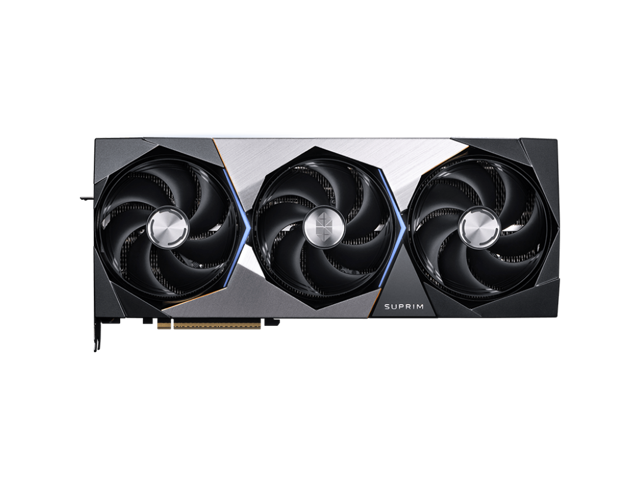


MSI GeForce RTX 5090 32G SUPRIM SOC Features and Photos
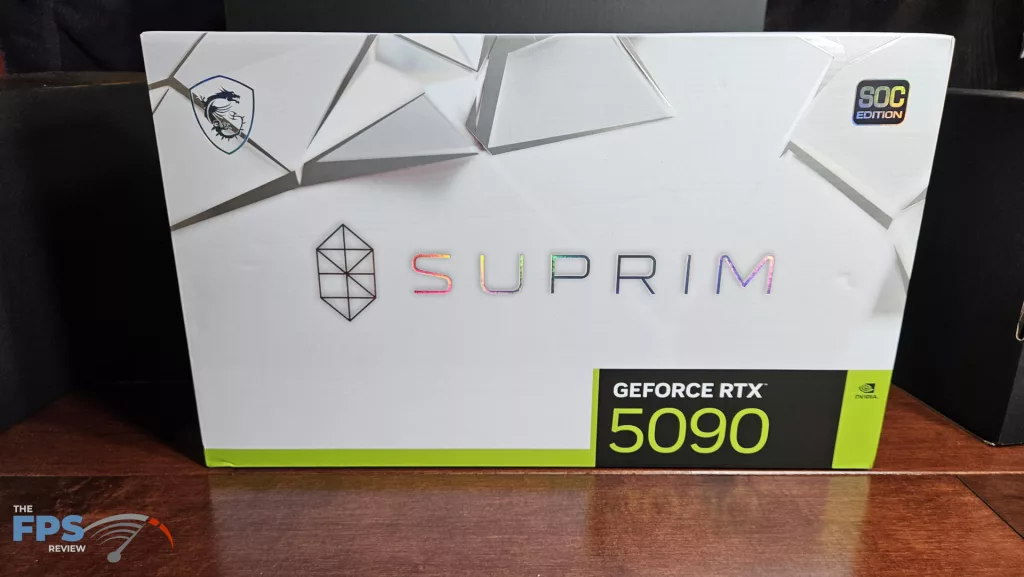
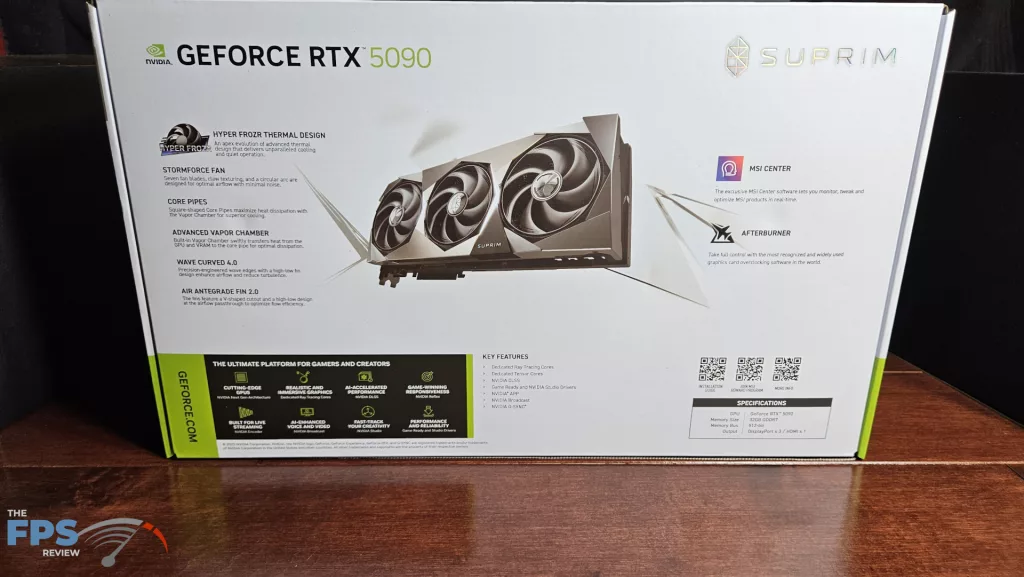
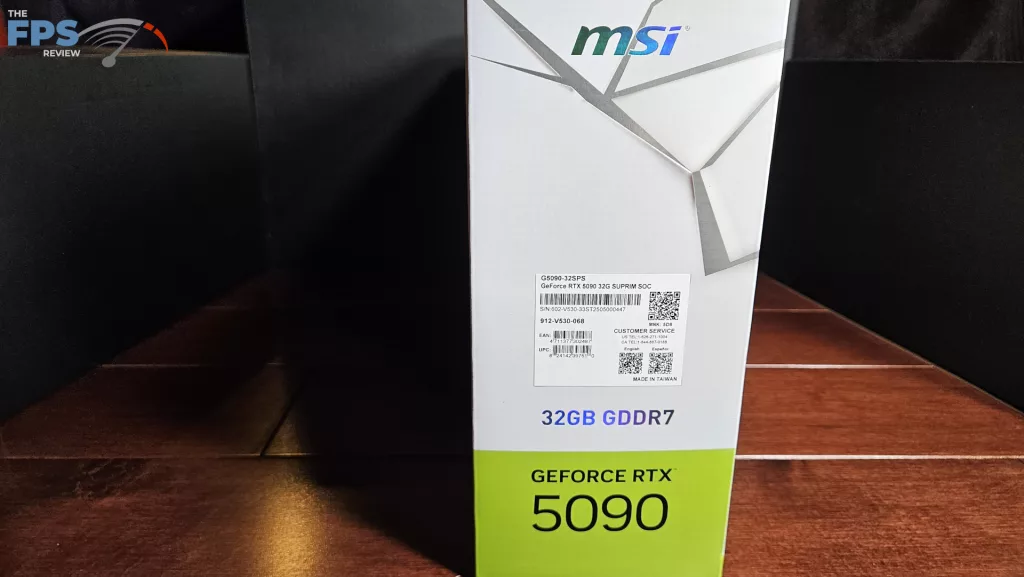
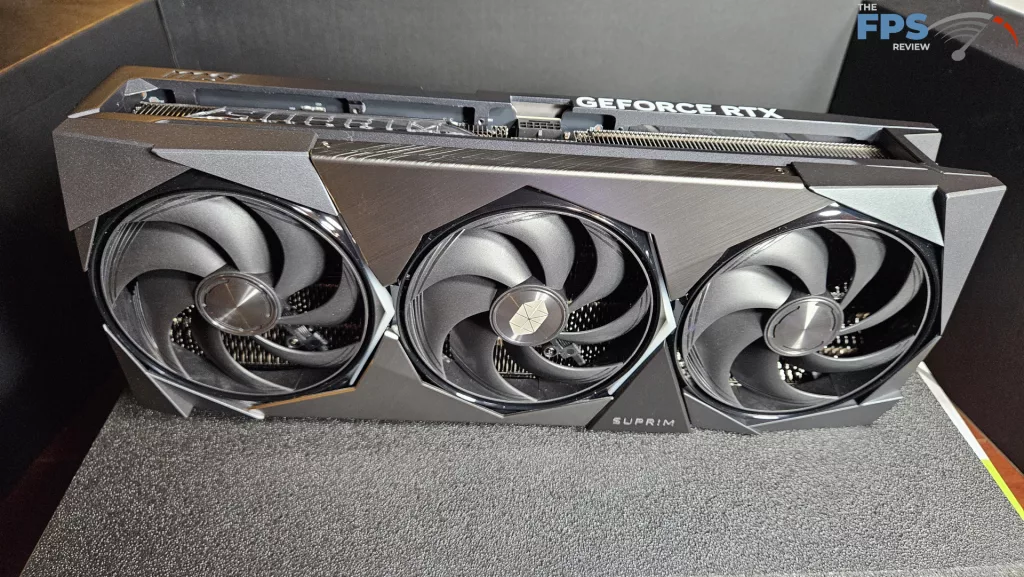
This MSI GeForce RTX 5090 32G SUPRIM SOC was a full retail package, arriving in shrink wrap. The first thing we noticed was the weight of the box overall. It was heavy. Opening the top revealed a single thick piece of foam. Underneath was the video card and two accessories. The card was tightly nestled in heavy foam and inside an antistatic bag.
Other contents: one quick start guide, one adjustable video card support, and a 4-headed adapter. Again, when removed from the box, the card is big, heavy, and solid. Overall, the design is first class. The fit and finish are impeccable. The shroud is thick metal with brushed reflective aluminum accents surrounding the fans. The back of the card is a vented, thick aluminum with the same brushed accents. The top side of the card shows a big LED “SUPRIM”, the very end an LED SUPRIM logo, and there are LED chevrons aside the left and center fans.
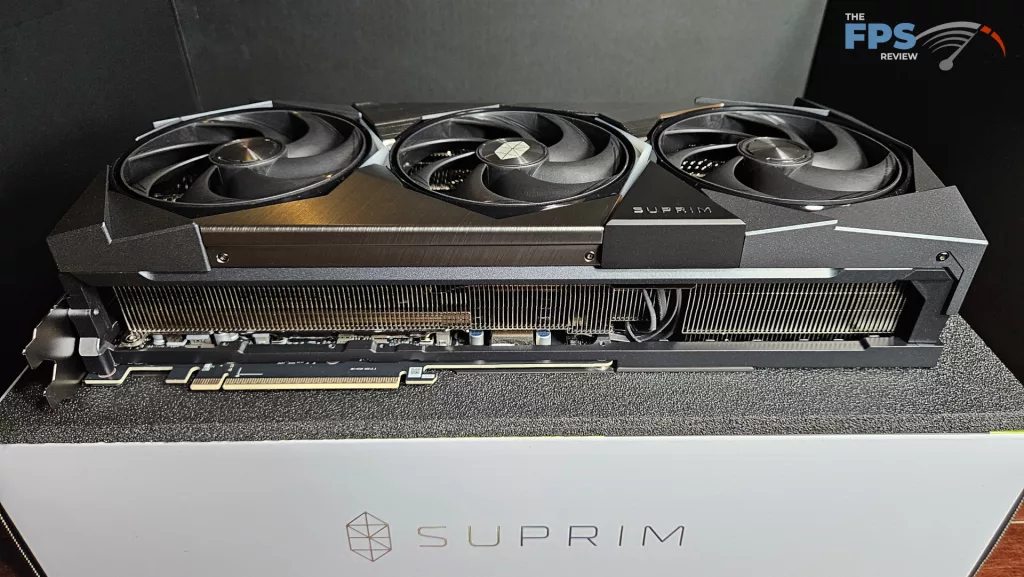
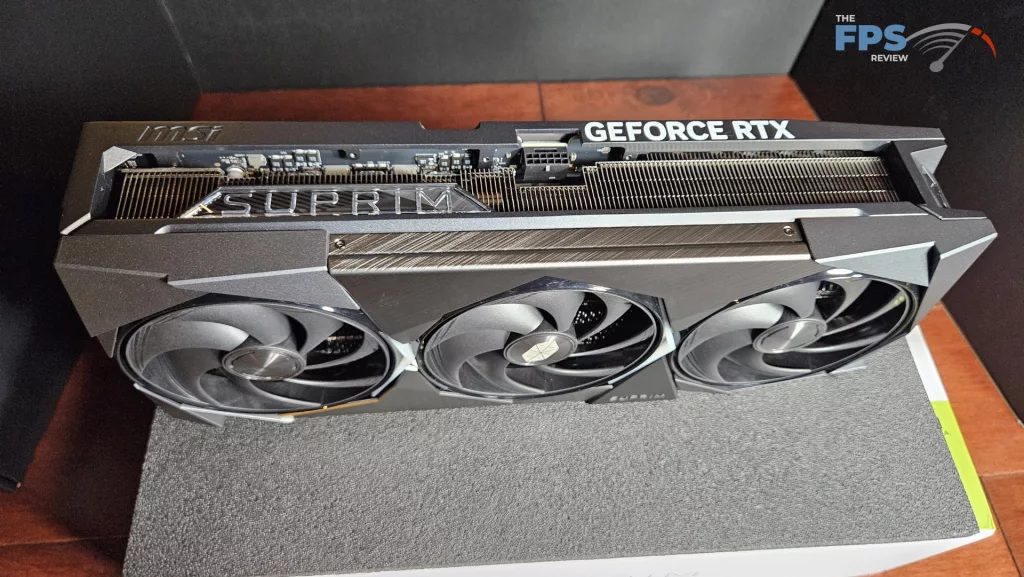
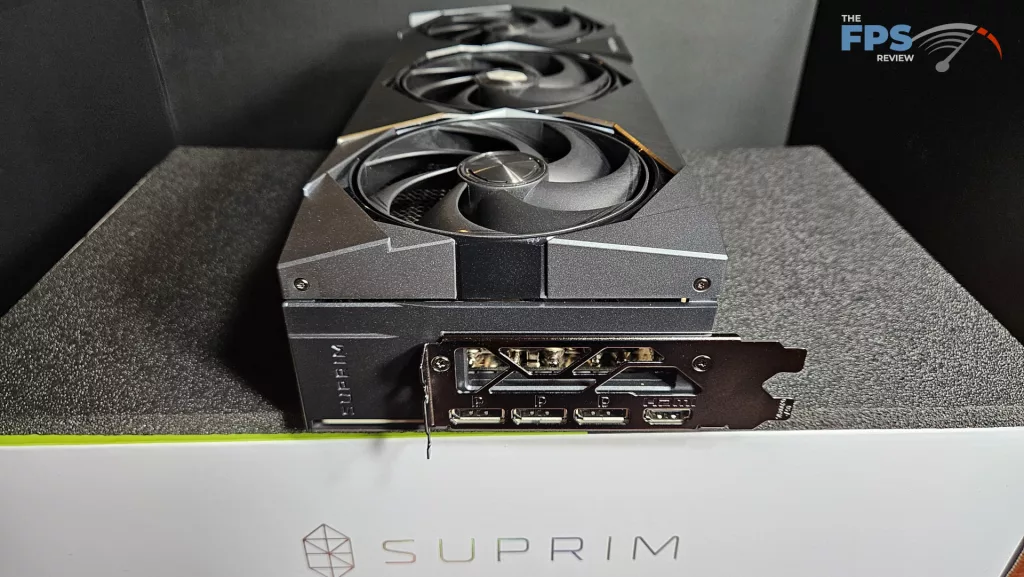
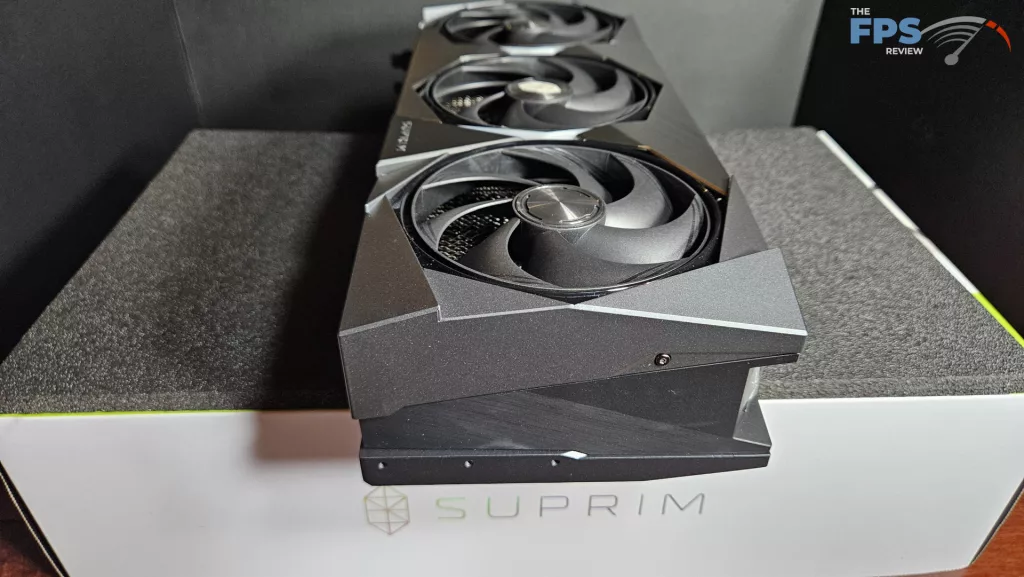
The three fans are 100mm axial, textured “StormForce” fans. These have been designed to increase airflow and decrease turbulence. The heatsink is likewise big. Making up a large portion of the thickness of the card, it is a custom design mated to direct contact heat pipes. The heatsink fin pattern is also customized to increase air flow and decrease noise. The backplate is especially vented to aid in airflow and shows off a SUPRIM logo to boot. What you don’t see is a full-length aluminum support bracket giving support to the PCB and the heatsink.
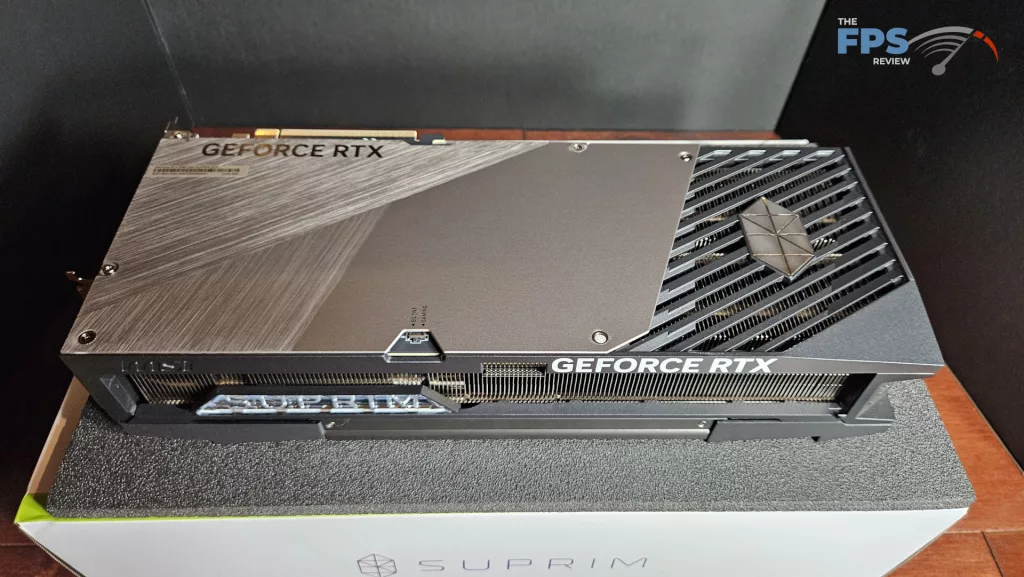
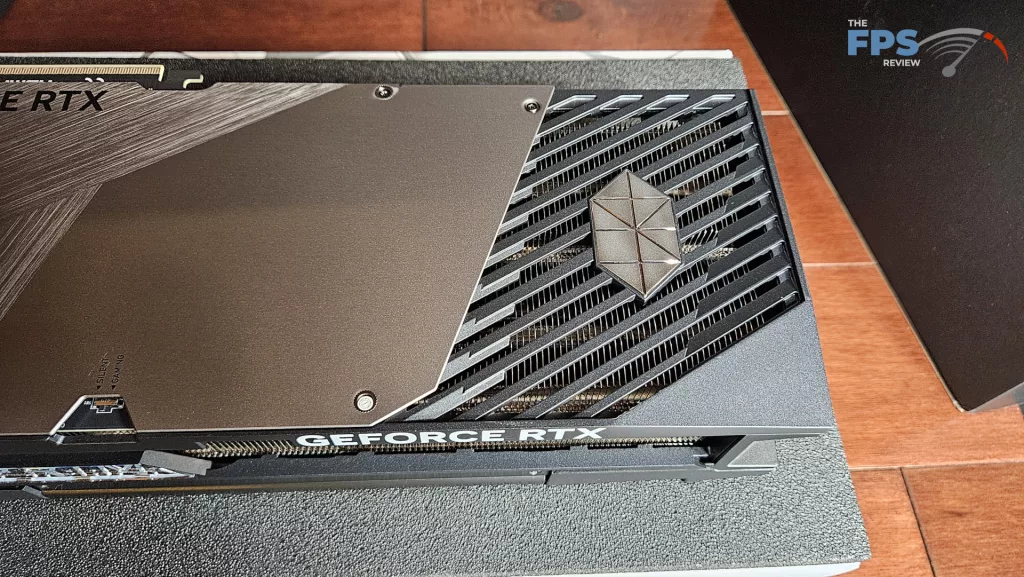
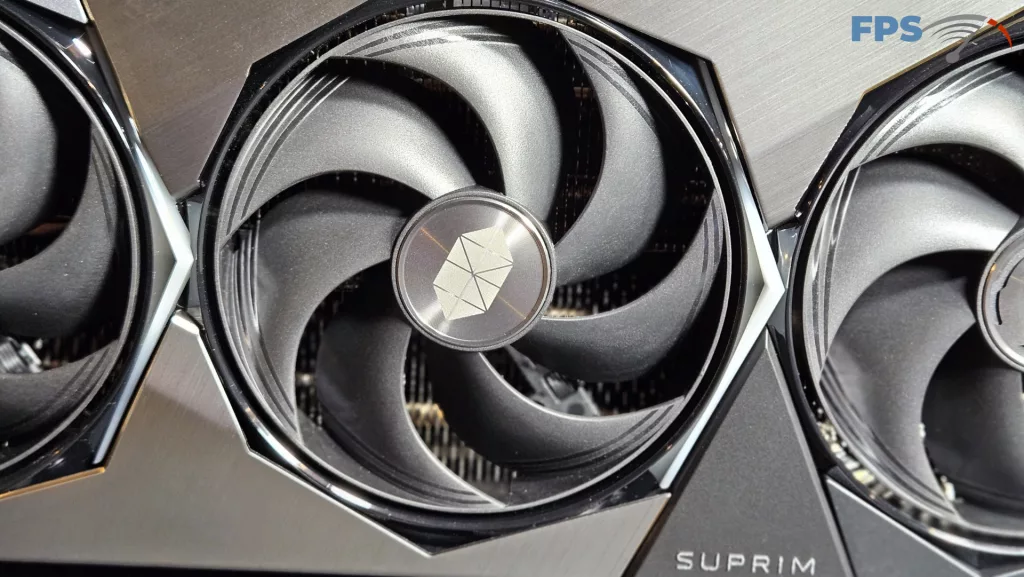
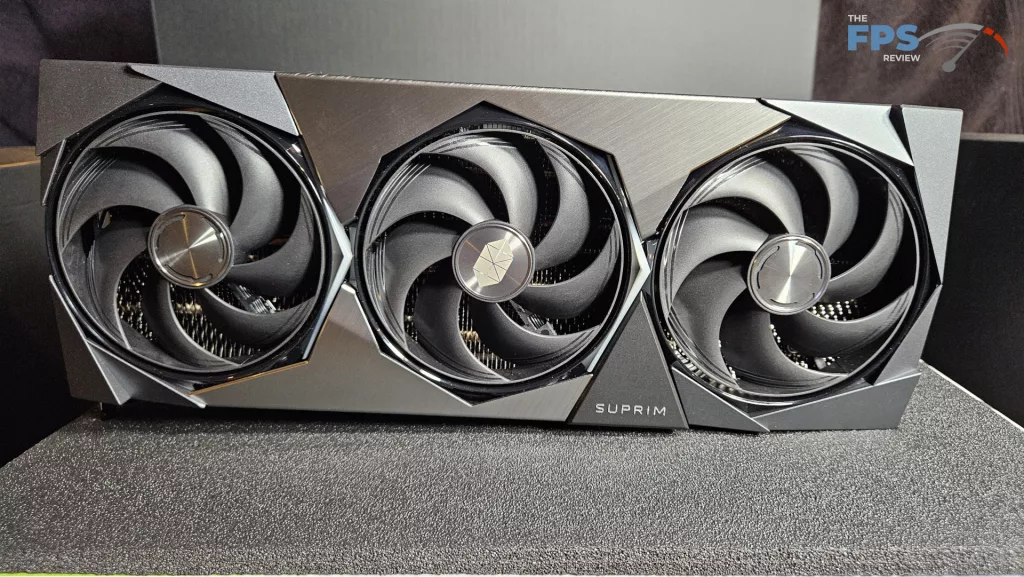
In the introduction, we mentioned the factory clocks. The video card is equipped with a BIOS switch, one side “Silent” and the other “Gaming”. The card arrived with the switch in the “Silent” position. This switch not only controls fan cycles but also GPU clocks and TBP, as we listed above. “Silent” mode offers a 575 Watt TBP, while “Gaming” mode takes you right to the 600 Watt power cable limit. We discussed the GPU clocks above.
One can download MSI Center and select the “User Scenario” software, which will allow choosing “Extreme Performance,” adding an additional 15MHz to the factory GPU overclock. MSI recommends a 1000 Watt minimum PSU. Power is supplied via the 12V 2×6 cable. The video card is PCIe 5.0 X 16 compliant. Front I/O shows three DP 2.1b and one HDMI 2.1b ports. Overall dimensions are 14 1/8 x 5 3/8 x 3 inches (metric: 359x150x76 mm) with a weight of 6 pounds 5.8 ounces.
When you handle this video card and install it, using the video card support is highly recommended. Not to forget RGBs, the controls for RGB are located in the MSI Center software. Simply select “Mystic Lighting”. For this, we downloaded version 2.0.55.0 from the support tab on the webpage.
